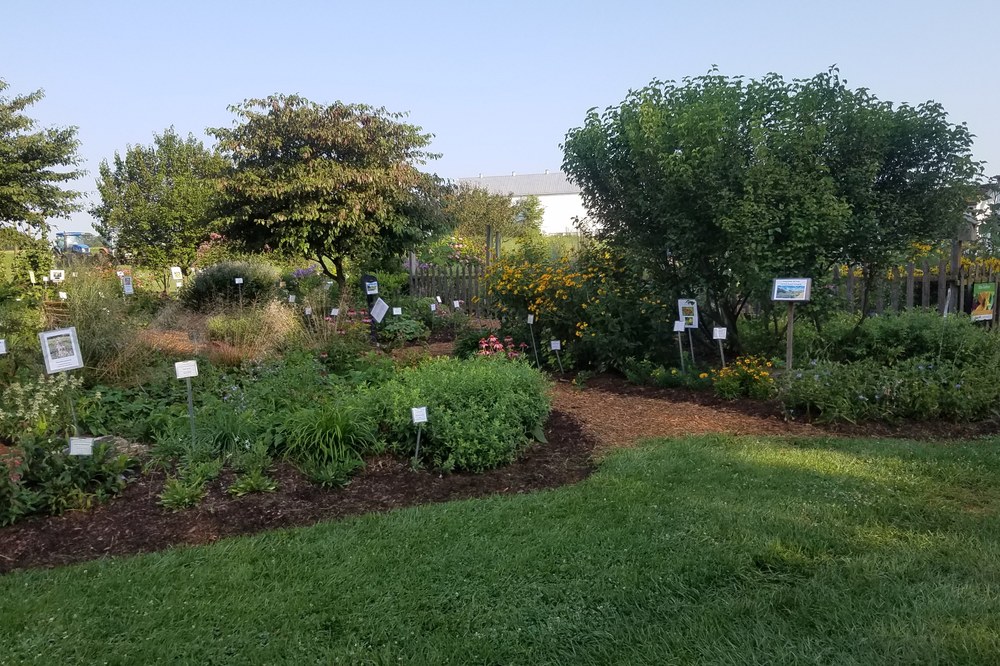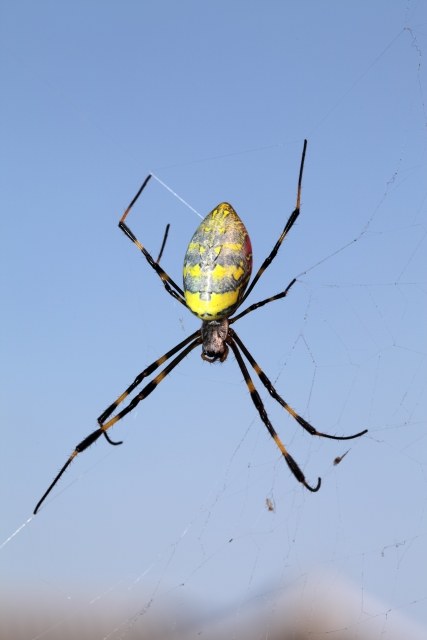Posted: June 9, 2021
Gardening involves projects that can be done every year at the same time. Though annual weather may influence the timing of these tasks, here are the things to do in June.

Native Garden at South East Agricultural Research and Extension Center. Photo and article by Pam Hall.
We are past the risk frost and this is the time to begin planting. Before planting your summer blooming perennials deadhead-remove spent glooms of your early blooming spring perennials including spring ephemera. Cut off or dead head spring flowering perennials as blossoms fade.
Finish your planting and start watering as needed. Watch your watering as it is especially important for new plantings. Water when you have less than 1 inch of water for the week.
Mulching will save you time and labor, keeping weeds from sprouting and hold moisture in the soil. Placing wet sheets of newspaper under mulch will keep weeds away longer.
By June you will have perennials in bloom. To encourage more blooms, start deadheading, which is removing fading flowers. Do this with sharp shears, cut back to the bud or leaf. This will re-invigorate the plant and encourage it to flower again. This is also a benefit for the pollinators - more flowers.
June is when you pinch back or cut back plants, a kind of pruning that forces plants to grow bushier rather than get too tall or leggy. Pinch back the main stem down to the growth node. Each time you remove part of a main stem, your plant will try to grow two new stems which means more flowers.
This year coming to Northeast U.S. is a scary looking Joro spider, Trichonephila clavate but you do not need to worry about Joro. It is notable because of its size and color. These spiders were accidentally introduced in 2013, via container ship from East Asia to Atlanta. The palm-size arachnid spread across Georgia and into neighboring states now it is moving Northeast US including PA.

The spider can actually "fly" using their webs as a form of parachute as wind carries them. They also are expert stowaways. They are harmless to humans. They eat insects including mosquitos, biting flies, even brown marmorated stink bugs. They are passive hunters waiting for insects to get caught in their webs. At this time, there is no evidence that Joro spiders will upset the ecological balance where they live. State Agricultural Agencies do not recommend killing the arachnid.
2021 information
Invite beneficial insects to your garden with a mix of plants! Songbirds and other wildlife rely on a variety of native insects, (ones that were here before European settlers). Songbirds rely on native insects to feed their young. Pesticides and home remedies for insect control may harm your plants and insects that can be helpful in your garden, particularly if pesticides are not recommended for the specific pest you have. Household products are often not specified for use in a garden setting.
Invite beneficial insects to your garden with a mix of plants!
Yes, I said invite beneficial insects into your garden. Our songbirds and other wildlife rely on native insects, the ones that were here before settlers. Not Japanese beetles! Songbirds rely on native insects to feed their young. Using herbicides or insect killers can kill the beneficial insects which help control insects you don't want.
Hummingbirds.
They are fun to watch and will flock to your yard if you include plants they prefer. They are nectar-feeders with long beaks and prefer plants with tubular blooms. They are attracted to red and orange flowers, but they will feed on any color flowers if it has nectar in it. Plant native Trumpet Honeysuckle, Lonicera sempervirens, and native Penstemon digitalis. I plant Salvia (a native annual) and Petunias (non-native annuals) in pots on my deck to attract hummingbirds.
Spotted Lanternfly
Is a non-native invasive insect that feeds on certain plants and trees and can do significant damage. They complete their life cycle in one year. June is when the nymphs hatch. They are black insects with white speckles that look like tiny spiders. They are now in 34 counties in Pennsylvania. Pesticides and sticky tape on trees are not recommended to catch them. Birds, hummingbirds, butterflies, and mammals get stuck to the tape and die.
Please read the Penn State Research to understand what they are and what you can do.
- Spotted lanternfly frequently asked questions (FAQs)
- Extension educators explain spotted lanternfly life cycle
June of 2021 brought a one in 17-year event.--the periodic cicadas came. These periodic cicadas are native to the eastern United States and occur nowhere else in the world. They emerged after 17 years of hibernating in the ground. They are big, noisy, pulsating bugs, and there were lots of them. They are harmless!
The cicada does not bite or sting, it is not poisonous to touch, and does not eat plants, or give them disease, or cover our patios with foul smelling secretions. Cicadas live on sap from plants or plant roots.
Cicadas are easy prey for a variety of birds and other insect-eating predators. They are eaten by squirrels, possums, skunks, raccoons, foxes, and even family pets. Using poisons or pesticides can kill animals that eat the cicadas. Their stay is always brief, after their eggs hatch the new cicadas will go back into the ground!
Adams County Master Gardener news: They're coming
Penn State Extension: Periodical Cicada

